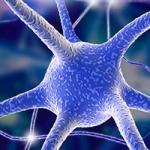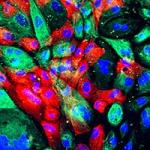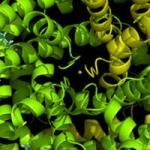
Research Topics
The Section on Structural Cell Biology uses advanced light and electron microscopy in conjunction with biochemistry to address important questions in cellular neurobiology. Current projects are focused on the structure and function of the post synaptic density and the molecular machinery for transporting proteins in axons. The molecular architecture of isolated PSDs is investigated by a novel immunogold/replica technique while the structural plasticity of intact PSDs is examined by thin section electron microscopy. Previous observations on post-mortem accumulation of CaM Kinase II on isolated PSDs led us to explore its accumulation in intact neurons. Sustained activation of glutamate receptors causes a reversible overall thickening and accumulation of CaMKII on PSDs. Exposure of neurons to energy-depleting conditions and excitotoxic stress promote similar changes, but now CaMKII also appears in discrete clusters throughout the cell. These clusters have been isolated and shown to be essentially composed of CaMKII. We are, thus, uncovering a mechanism that could protect the neuron during excessive activity by decommissioning CaMKII while maintaining calmodulin trapping. The conditions for and function of accumulation of CaMKII at PSDs are under investigation.
The project on axonal transport is concerned with determining how essential proteins are transported in axons. Transport of fluorescent probes injected into living squid axons is measured by confocal microscopy. We have recently been able to demonstrate the slow transport of polymerized tubulin and neurofilament proteins in living squid giant axons as well as the existence of a transport system able to move tubulin in its unpolymerized, soluble form. We are now testing the potential roles of kinesin, myosin and dynein motors in the transport of the various soluble and polymerized axonal proteins that are necessary to the development and maintenance of axons.
Biography
Selected Publications
- Cole AA, Reese TS. Transsynaptic Assemblies Link Domains of Presynaptic and Postsynaptic Intracellular Structures across the Synaptic Cleft. J Neurosci. 2023;43(33):5883-5892.
- Jung JH, Chen X, Reese TS. Cryo-EM tomography and automatic segmentation delineate modular structures in the postsynaptic density. Front Synaptic Neurosci. 2023;15:1123564.
- Chen X, Crosby KC, Feng A, Purkey AM, Aronova MA, Winters CA, Crocker VT, Leapman RD, Reese TS, Dell'Acqua ML. Palmitoylation of A-kinase anchoring protein 79/150 modulates its nanoscale organization, trafficking, and mobility in postsynaptic spines. Front Synaptic Neurosci. 2022;14:1004154.
- Dosemeci A, Weinberg RJ, Reese TS, Tao-Cheng JH. The Postsynaptic Density: There Is More than Meets the Eye. Front Synaptic Neurosci. 2016;8:23.
- Senatore A, Reese TS, Smith CL. Neuropeptidergic integration of behavior in Trichoplax adhaerens, an animal without synapses. J Exp Biol. 2017;220(Pt 18):3381-3390.
Related Scientific Focus Areas
This page was last updated on Saturday, August 26, 2023


